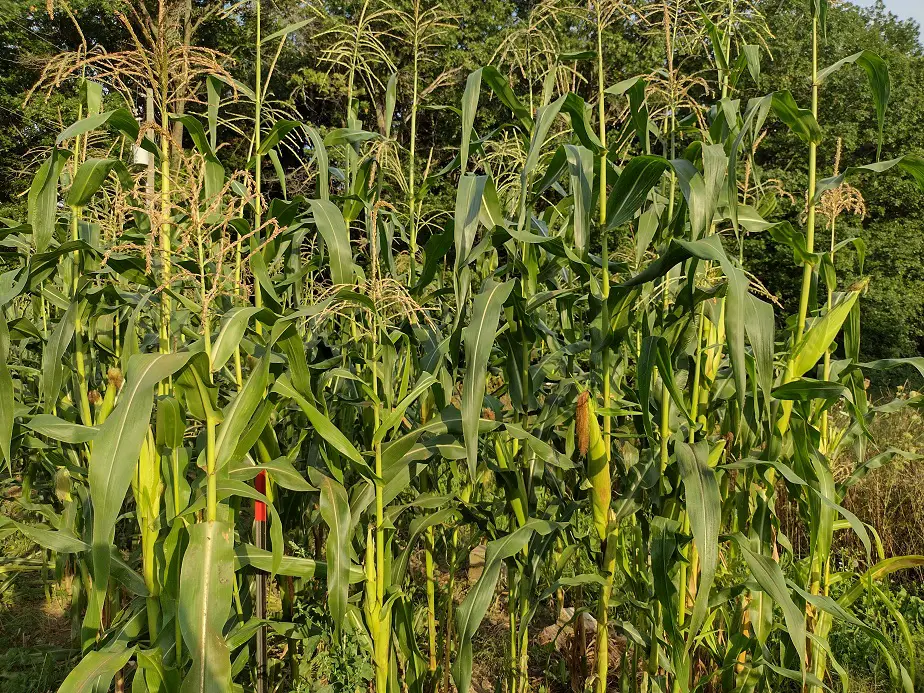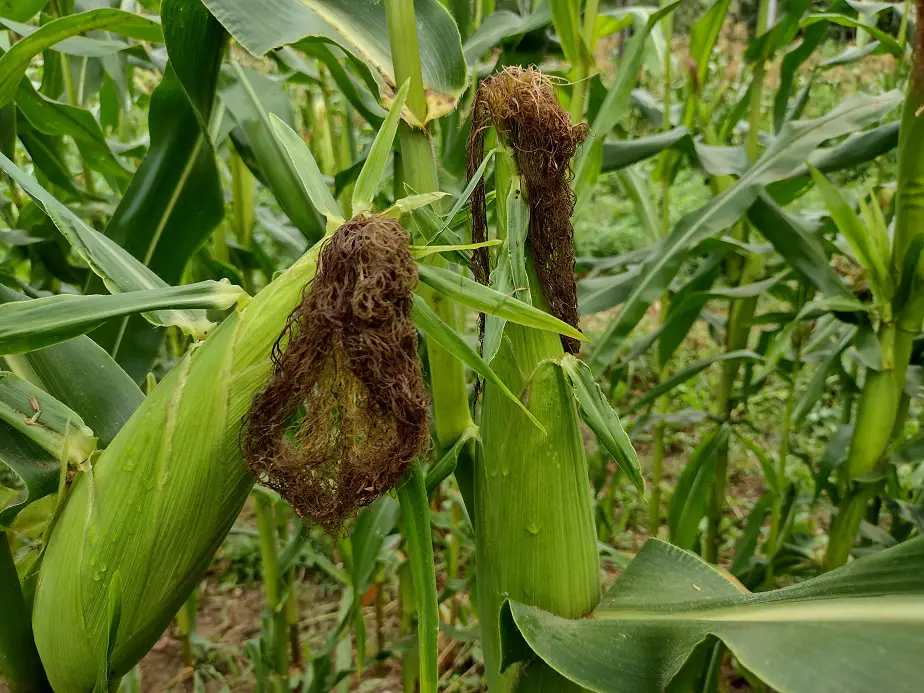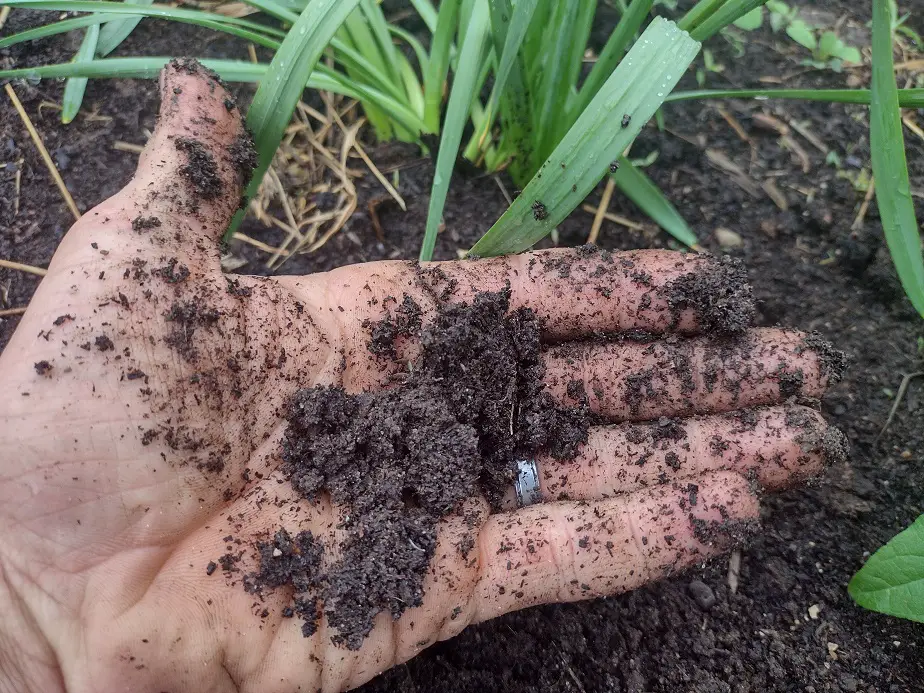Corn is one crop I will always grow. Its feed value and ease of harvest makes it a valuable asset to our homestead.
Corn fields have a base fertilizer application of 200 pounds of nitrogen, 100 pounds of phosphorus, and 170 pounds of potassium per acre. The practical application rate goes up or down from there depending on soil texture, amount of water, and the soil’s natural fertility rates.
What kind of corn, what soil, and what weather? It all depends. Let’s talk about it.
Fertilizer for an Acre of Field Corn
While specific circumstances vary, this is a general recommendation as a starting point.
| variety | N per acre | P per acre | K per acre | Estimated Yield |
| Field Corn (production hybrid) | 200 lbs. | 100 lbs. | 170 lbs. | 180 bushels/acre (56 lbs./bushel) |
| Popcorn (production hybrid) | 160 lbs. | 80 lbs | 136 lbs. | 100 bushels/acre (56/lbs./bushel) |
| Sweet Corn (all types) | 150 lbs. | 75 lbs. | 125 lbs. | 250 bushels/acre (65 ears/bushel) |
| Specialty Corn (Indian/flint/short season) *Depending on size and yield | 200-100 lbs. | 100-50 lbs. | 170-85 | variable. |
The three macronutrients for corn are nitrogen, phosphorus, and potassium; also referred to as N-P-K. Nitrogen is the largest limiting nutrient, and usually the most lacking. It is water-soluble and tends to outgass from the soil. Generally, nitrogen is mostly used up and depleted by the next season.
Phosphorus is needed about half as much as NItrogen. But, it often builds up in the soil. Phosphorus is a heavy mineral that does not leach much and tends to bond with other minerals in the soil, creating a phosphorus “toxicity” if not kept in check.
While not a real toxicity, it refers to the phosphorus actually holding other needed nutrients from plants in a chemical bond. The result is a net lack of nutrients to the plants. This issue, when severe, can take years to correct.
Potassium is almost as fleeting as nitrogen. It’s very water-souuble, which means some will be washed away from rain or irrigation. It can outgas, literally evaporating as it undergoes chemical changes in the soil, and it’s readily used up by plants. Potassium doesn’t hold in the soil well.
In decent soil, corn only needs nitrogen, phosphorus, and potassium added for good growth. With sub-par soil or poor management history, the addition of calcium and magnesium is common.

Cost to Fertilize Corn in 2023
The estimated cost of fertilizing corn is $200 an acre for 2023 when using bulk liquid fertilizer. Using bagged fertilizer like 20-20-20 is not recommended even for a small field due to the costs which may exceed $1,000 dollars per acre.
Usually, the only way to get a good price on bulk liquid fertilizer is to bring your own barrels or tanker to a farm supply co-op. While the cost of fertilizer is up, it’s still not hopeless. Farmers using quality soil improvement methods will see a lesser fertilizer need. Thus, lower cost. Build the soil, build the farm.
The amount of fertilizer needed can easily go up or down 50 percent depending on soil quality. More on that in a minute.
Fertilizer for an Acre of Sweet Corn
Many experienced growers use a base application rate of 150 pounds of nitrogen, 75 pounds of phosphorus, and 125 pounds of potassium per acre. Sweet corn is often fertilized as heavily as field corn, but its needs are actually a bit lower.
Sweet corn needs less fertilizer than regular field corn. Although, only by a little. Usually, it’s fertilized approximately 70 percent as heavily as fields of dent corn (regular field corn). Some growers do a bit more or a bit less. You can get away with fertilizing on the same scale, but it’s wasteful in large fields.
30 percent over-fertilization usually isn’t a major problem for growing or harvesting a decent crop. It can be , especially if your phosphorus levels are already high. Over-nitrogenating soils is problematic because it encourages plant cells to grow faster then the internal structure of the plant can keep up.
This makes the plants larger but weaker and more prone to disease, pests, and fungus. basically, the plant cells are stretched larger and haven’t quite had the time to build up a strong and resilient structure. It’s too fast of a growth spurt and the plants usually don’t have time to properly recover.
Sweet corn doesn’t need any fertilizer after the ears are picked, which is why it’s usually about 30 or so percent lower in fertilizer needs than field corn. Sweet corn also grows less green plant matter, the stalks look shorter and scrawnier. That’s another reason why it doesn’t need as much Nitrogen.

Fertilizer for an Acre of Pop Corn
Popcorn should be fertilized at 80 percent of the recommendation for field corn. That’s 160 pounds of nitrogen, 80 pounds of phosphorus, and 136 pounds of potassium per acre. You can have the soil professionally tested for a recommendation, or test it yourself and estimate fertilizer needs for smaller plots.
The leading expert in popcorn production recommended to me that fertilizing at 80 percent of the normal rate for corn is preferred. I know several people who have had good luck just sticking to conventional field corn numbers. There is wiggle room, but I’d stick with what the expert said.
Popcorn has a small yield and smaller stalks, similar to sweet corn, but it has a longer growing time. That’s why generally it is fertilized a bit more than sweet corn but not quite as much as popcorn.

How Soil and Weather Affect Fertilization Rates
The biggest culprit of fertilizer loss is poor soil. That is soil with little soil organic matter and little clay. Both work to absorb and retain fertility in the soil and to slow down the water-leaching of nutrients from your field. Although clay is helpful, it’s organic matter that really works magic.
Clay can hold 2-3 times as much nutrients and water as sandy soil. Soil organic matter has a retaining capacity of up to 300 times as much. Soil with little of either (bare, sandy soil) will quickly be depleted of the fast-flowing nutrients from natural rain or irrigation.
First off, that’s why building your soil is so important. Most soils in the world are lackluster, particularly generational farmland. Tilling is hard on soil and tends to degrade it. Scalping (removing all or most plant matter) is another cause of increased soil quality degradation.
In very sandy soils, you may need twice as much fertilizer as the standard base recommendation. In clay soil, you likely need 25 to 50 percent less. The real winner is in heavily organic (good and black) soil. That can, if done correctly, need very little fertilizer although that takes a very long time of quality management to get to that point.
In a large commercial setting, that’s very hard to manage. It takes an insurmountable amount of manure, compost, loose hay, or other organic material along with a reduced tillage operation. Small scale, it’s not too hard to do. You can manage a smaller area much more closely and intensively.
We’re starting to see a small shift in farming, leaning a bit more towards intensively managing smaller acreage instead of meagerly managing large acreage. If you can get more production with less fertilizer on less land, it’s certainly worth considering. Especially with the spike in land prices.
Although, it’s mostly new ventures looking into this alternative side. Most established farms aren’t all that interested.
How to Test Your Soil’s Fertility
You can test your soil by taking a sample and sending it to a soil testing lab, or by using a DIY soil test kit. Your local agricultural extension should handle professional testing. Once you have a bit of an idea of your soil, a DIY test will usually suffice.
I like the Lusterleaf 1601 soil test kit. It’s cheap, foolproof, and easy to read the results. For larger areas, do multiple tests and consider the average results. Results at right at the top of the scale are what you want for the full base-recommendation of 200 lbs. nitrogen per acre.
Related Articles:

